Your first efforts in a survival situation should be directed towards establishing a good water supply. Of course, before you can make good water, you need to know where to find water in the first place. One of these 13 places may provide all the water you need.
Where to Find Water in a Survival Situation
Creek Beds
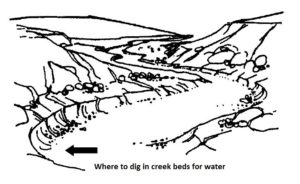
Where to Find Water by Digging in a Creek Bed
Are easily discernible in dry areas because of the relatively green vegetation and taller trees following the course of the creek. Unless there has been recent rain in the area the creek bed
will probably be quite dry.
You may be lucky enough to locate damp sand or mud at the bends of the creek or by digging in the creek bed at a likely spot. Water can be extracted from the damp sand or mud by soaking a rag in soil and wringing out the water into a container.
Rock Formations
If there is any water seepage from the ground, it is usually to be found near rock formations, where the country is rugged and undulating. It may also be found in some apparently dry areas. Rocky areas are ideal for rain catchments. Rain soaks very quickly into the soil, whereas it can lie in pools on a rocky surface for some time.
Salt Lakes
After rain has fallen, the top 3mm of a salt lake is fresh water. It can be siphoned off by using a grass straw or tubing from your survival kit.
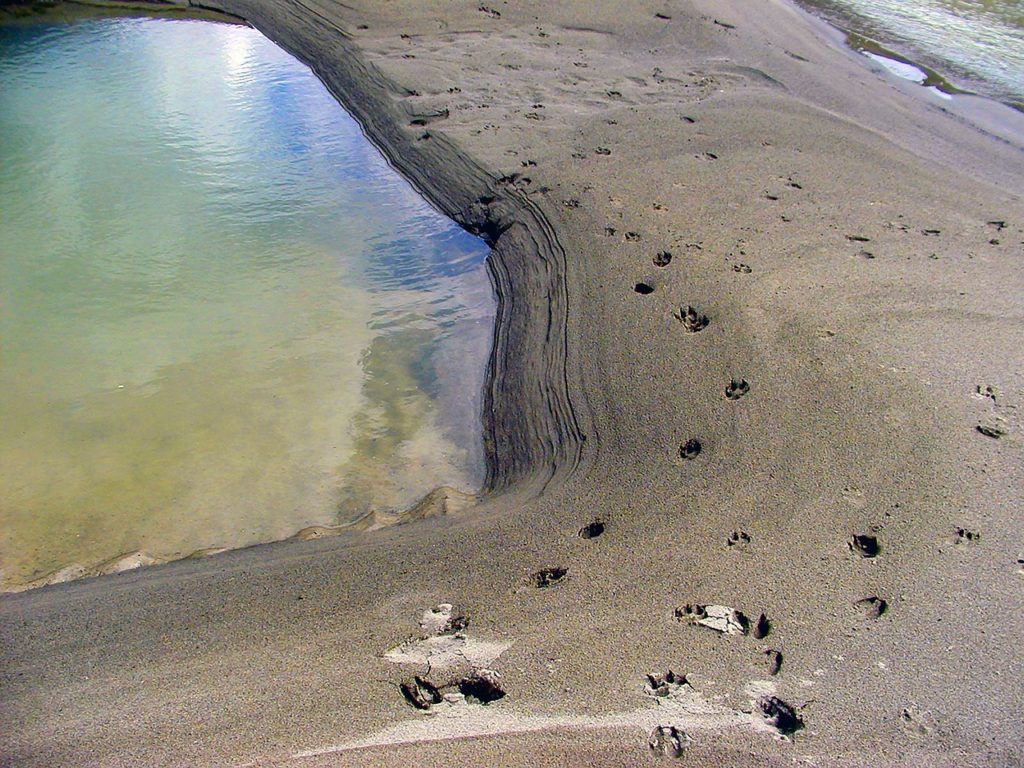
Animal Tracks Around a Watering Hole
Animal Trails
Animals need water the same as humans and they will travel great distances regularly each day, leaving trails to the water source. Where a large number of trails converge together, it would indicate that the water was not far distant.
Water Seepage
Sometimes water can be found close to the surface in natural springs and soaks or at the base of cliffs and rock piles where vegetation appears to be thriving.
Tree Roots
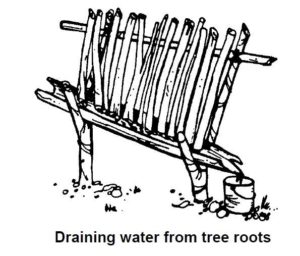
How to Drain Water from Tree Roots
In the early morning before the heat of the day, the roots from some trees can be cut into short lengths, stood end-on with their thickest ends down in a container allowing the fluid to drain. It is best to use roots that are easily obtained with a minimum of effort.
The ideal location for this is in creek beds and washouts where parts of the roots are already exposed or near the surface. Remember that the roots from trees growing in gullies will contain more water than trees growing on hills.
Certain Trees
Some trees store easily accessible water. Water will collect in the crevices of some of these trees after rain, in blisters under the bark in others such as the paperbark and in the sapwood under the bark of the boab.
A length of rubber tubing can be used to siphon water from crevices and the water from blisters and under the bark of some trees can be extracted by cutting a ‘V’ through the bark and collecting the escaping water in a container. (Note: Chewing the sapwood of trees is not recommended as it may aggravate thirst.)
Coastal Water Sources
You can obtain drinking water by digging high up on the beach above the tidemark or behind the first sand hills. It tastes brackish and should only be used in small quantities.
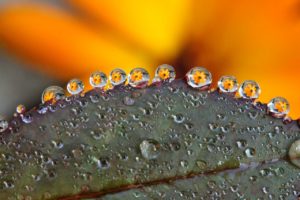
Dew Drops on a Leaf
Dew
The collection is tedious, but of some value in heavy grassland. Tie clumps of grass or cloth around ankles and walk around in dew-drenched grass at dusk or dawn. Squeeze moisture into a container and repeat. If you have a vehicle, wipe down the vehicle with a cloth and collect the dew in a container. You can also dig ‘dew holes’ and line them with plastic to collect the dew.
Transpiration Method
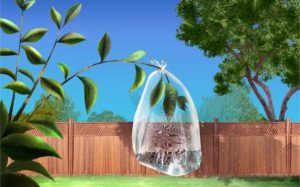
Where to Find Water (via the Transpiration Method)
Water can be obtained by placing a clear plastic bag over the leafy branch of a non-poisonous tree (be sure to ‘taste-test’ the foliage) and securing the bag with tape at the end of the branch. Seal any holes with tape, band-aids, etc. The action of the sun on the plastic will cause water to be drawn from the leaves and run to the lowest part of the bag.
Do not disturb the bag to collect the water, simply cut a small hole in the bag then reseal it. The leaves will continue to produce water as the roots draw it from the ground.
The water should be drained off every two hours and stored. Tests indicate that if this is not done the leaves stop producing water. Probably the heavy concentration of moisture-laden air
reduces the effectiveness of the sun. Ensure these bags receive maximum sunshine at all times.
Exposed roots can be tested for water content prior to bagging the tree. Soft pulpy roots will yield the greatest amount of liquid for less effort.
A piece of cord can be tied around the bottom of the bag to form a sump and will stop sticks, leaves, and insects from contaminating the water or blocking the tapping hole. It will also stop alkalines leaching from the foliage into the sump.
Foliage Bags
If there are no large trees in the area you can break up clumps of grass or small bushes and place them inside the bag, the same effect will take place as in transpiration. Make sure you follow the guidelines and provide a sump and remember to replace the foliage at regular intervals when water production is reduced.
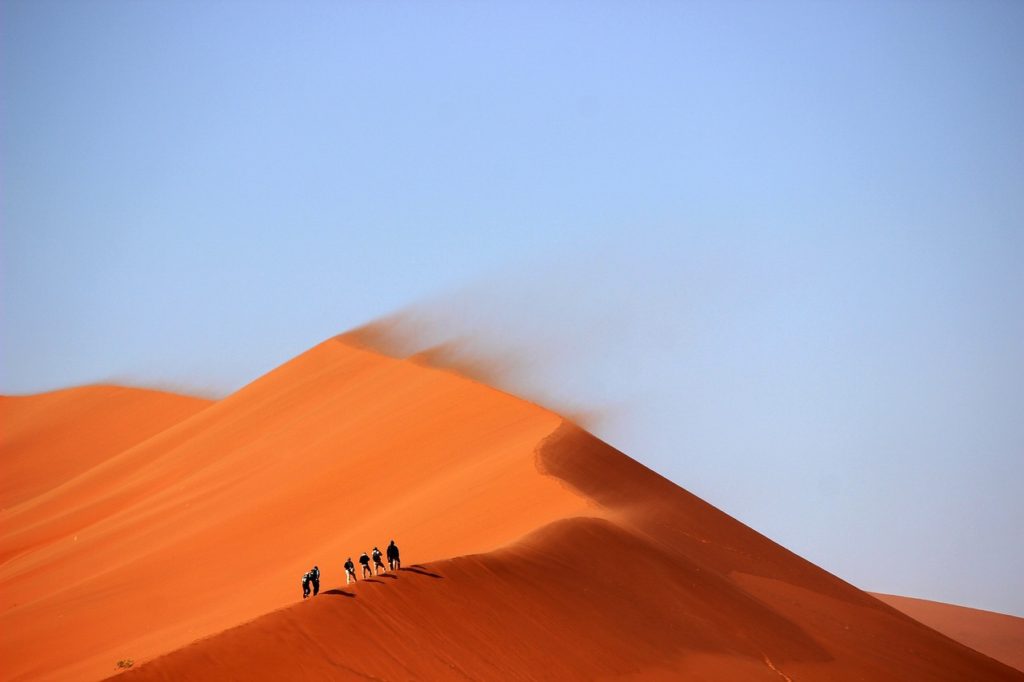
Walking Among Desert Sand Dunes
The Desert Still
Dig a hole approximately 1m x 1m x 60cm deep, line the hole with non-poisonous vegetation and place a container in the center with a piece of rubber tubing leading from the container out of the hole for use as a drinking straw. Cover the hole with a clear plastic sheet and seal around the edges with soil from the hole. The plastic sheet should be weighted with a stone placed in the center so it forms an inverted cone to allow condensed water to run into the center on the underside of the plastic and drip into the container.
The desert still method will work without the drinking straw, however, to collect the water the edges of the plastic must be lifted allowing moisture-laden air to escape. The foliage will need to be replaced when water production falls off. Care should be taken that the plastic sheet does not touch the foliage as this will prevent the condensed water from running into the container. Additional fluid such as salt water from salt lakes, urine, etc. can be added to the hole.
Note: This method while efficient has the disadvantage of requiring a lot of effort and subsequent loss of fluid from the body through perspiration and therefore is not recommended in areas where the transpiration bag can be used.
Distilling Sea Water
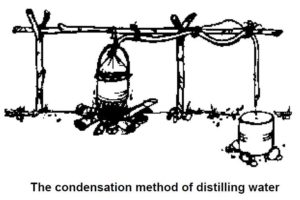
Where to Find Water – Condensation Method of Distilling Water
If only salt water is available a distilling plant can be made. You will have to improvise and use containers that can be found or that you may have. First you require a container of seawater and material to seal the container to prevent steam from escaping. Push one end of the tubing or rubber hose through this seal material and check to see that the seal remains intact while blowing into the loose end of the tubing. Place the container onto a fire and bring to the boil. Steam will be forced through the tube where it condenses and fresh water will drip from the end, into another container.
Another method is to simply bring water to the boil and catch as much steam as possible on a piece of cloth and then ring it out. Although this method works, it is not the most efficient.
You must remember that the steam is the fresh water and therefore you must trap the steam to get fresh water. Any improvised method will do even if you place an open container on the
fire and bring it to the boil, and then arrange a small plastic ‘tent’ on top of it. The steam will strike the tent, condense and run down to your container or containers.
Note: Aluminum foil or similar would make a seal around the container by folding it into a cone shape with the tubing attached to the small end of the cone and placing the large end around the container, secure ends of the cone with wire to make the seal. Run the tubing through a cooling agent (water).